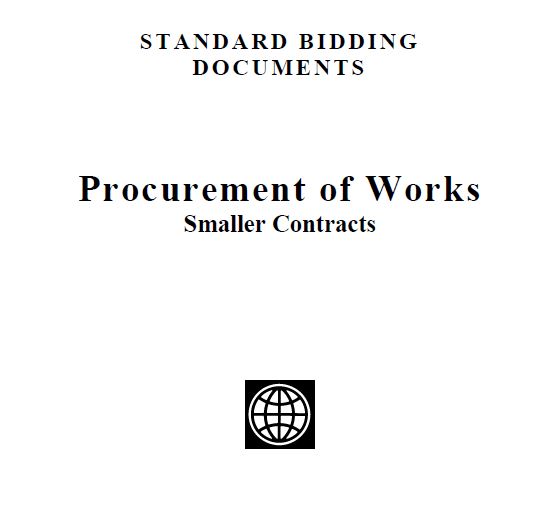STANDARD BIDDING DOCUMENTS Procurement of works
These Standard Bidding Documents are intended as a model for admeasurement (unit prices or unit rates in a bill of quantities) and lump sum types of Contract, which are the most common in Works contracting. Lump sum contracts are used in particular for buildings and other forms of construction where the Works are well defined and are unlikely to change in quantity or specification, and where encountering difficult or unforeseen site conditions (for example, hidden foundation problems) is unlikely. The main text refers to admeasurement contracts. Alternative clauses or texts are supplied for use with lump sum contracts. 2 Care should be taken to check the relevance of the provisions of the standard documents against the requirements of the specific Works to be procured. The following directions should be observed when using the documents: (a) All the documents listed in the Table of Contents are normally required for the procurement of Works. However, they should be adapted as necessary to the circumstances of the particular Project. (b) Details to be provided by the Employer prior to release of the bidding documents are limited to the Invitation for Bids, Bidding Data, and Contract Data (Section 4), in addition to Sections 5-7, which deal with Specifications, Drawings, and Bill of Quantities, respectively. Specific details should be furnished in the spaces indicated by italicized notes inside brackets. Those details not filled in by the Employer are the responsibility of the Bidder. (c) This bidding document is intended to serve on a repetitive basis in a Borrower’s country, once agreement between the Borrower and the World Bank has been reached. Modifications for specific Project or Contract needs should be provided only in the Contract Data as amendments to Conditions of Contract. If modifications must be made to bidding procedures, they can be presented in the Bidding Data. (d) The notes inside boxes with single borders are not part of the text, but rather contain instructions for the user, as do the Preface and this Introduction section. They should not be incorporated in the bidding documents. The cover should be modified as required to identify the bidding documents as to the names of the Project, Contract, and Employer, in addition to date of issue. (e) The notes inside boxes with double borders should be retained in the issued bidding documents, since these notes provide important guidance to bidders. (f) The standard documents have been prepared for bidding where either prequalification or postqualification applies. The process of prequalification of bidders is not covered in these standard documents. Refer to Standard Prequalification Documents, Procurement of Works issued by the World Bank.
